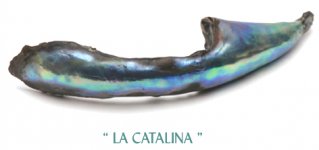M
Mister.Hill
Guest
Cleaning/Polishing Abalone Pearls
Cleaning/Polishing Abalone Pearls
Hello all,
I'm sure this must have been asked before, but I can't seem to find specifics.
I have some naturally formed Abalone pearls, but i'm not 100% sure on the BEST way to bring out their natural coulors. As an experiment (please don't shoot me for this) but I put a small amount of vegetable oild on one and it looked amazing. I'm sure this is a big "no no" so I was looking for any words of wisdom from people who have been down this path already?
Also as a secondary question. I gave a small selection of pearls a light polish in a tumbler (only contatined soft dry polishing compound), but not long after removing them they start to really darken up. I was just wondering if anyone knew why this may happen.
Again, this process may have been a "no no" but I only tried it on a very small selection.
Thanks in advance for your time and advice.
Cleaning/Polishing Abalone Pearls
Hello all,
I'm sure this must have been asked before, but I can't seem to find specifics.
I have some naturally formed Abalone pearls, but i'm not 100% sure on the BEST way to bring out their natural coulors. As an experiment (please don't shoot me for this) but I put a small amount of vegetable oild on one and it looked amazing. I'm sure this is a big "no no" so I was looking for any words of wisdom from people who have been down this path already?
Also as a secondary question. I gave a small selection of pearls a light polish in a tumbler (only contatined soft dry polishing compound), but not long after removing them they start to really darken up. I was just wondering if anyone knew why this may happen.
Again, this process may have been a "no no" but I only tried it on a very small selection.
Thanks in advance for your time and advice.

